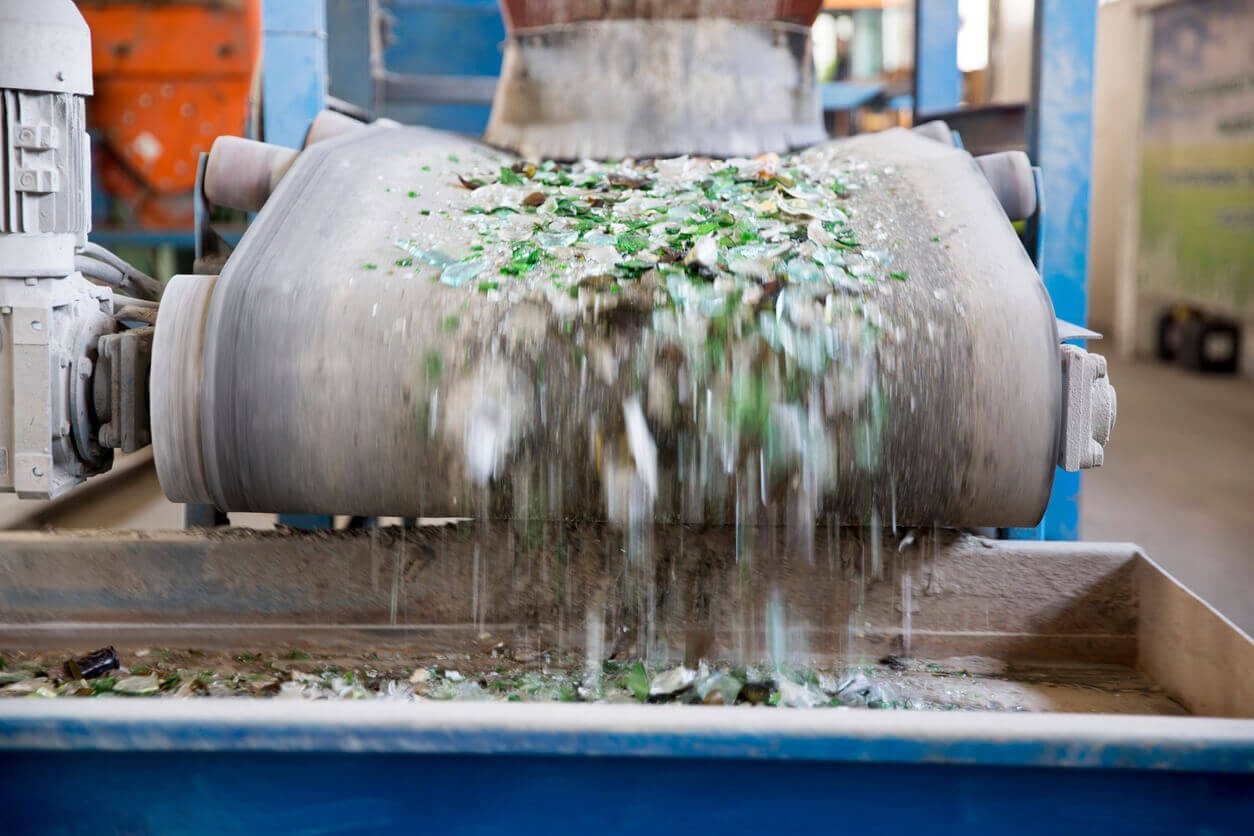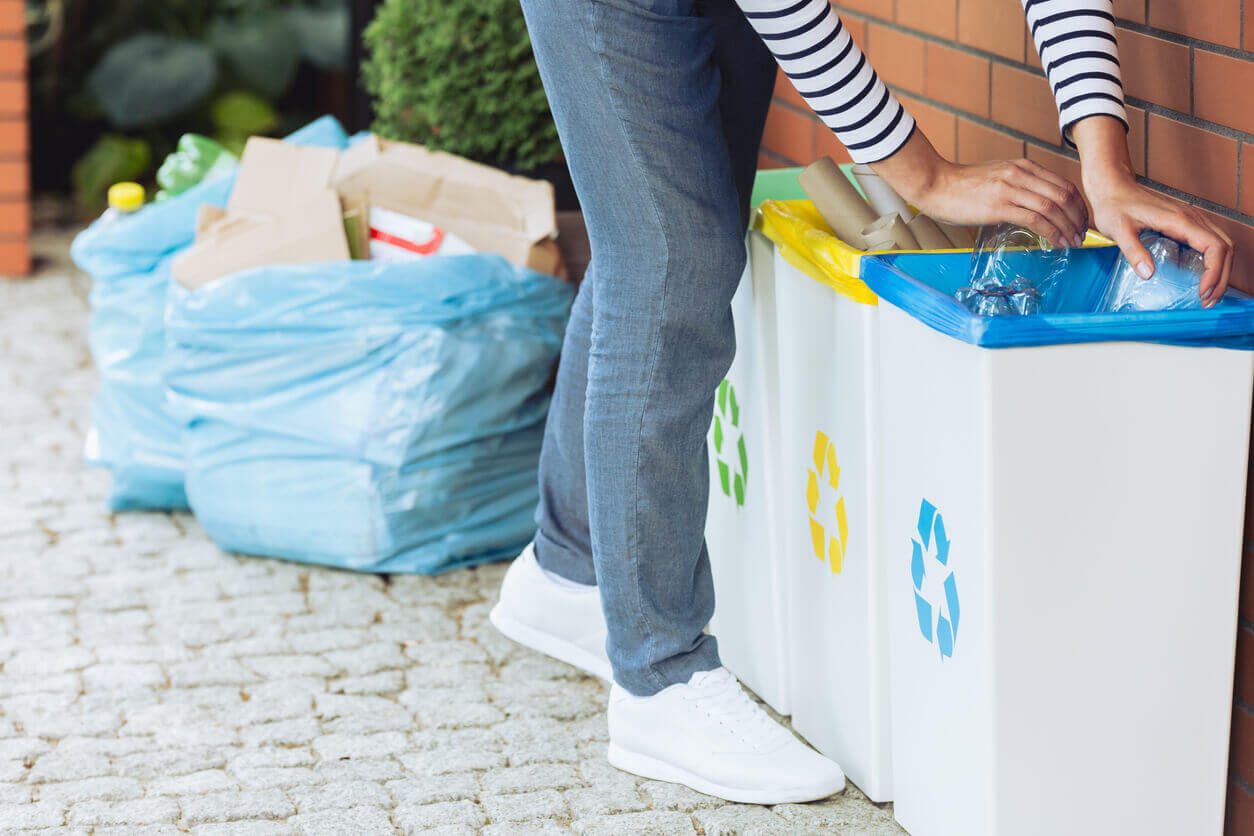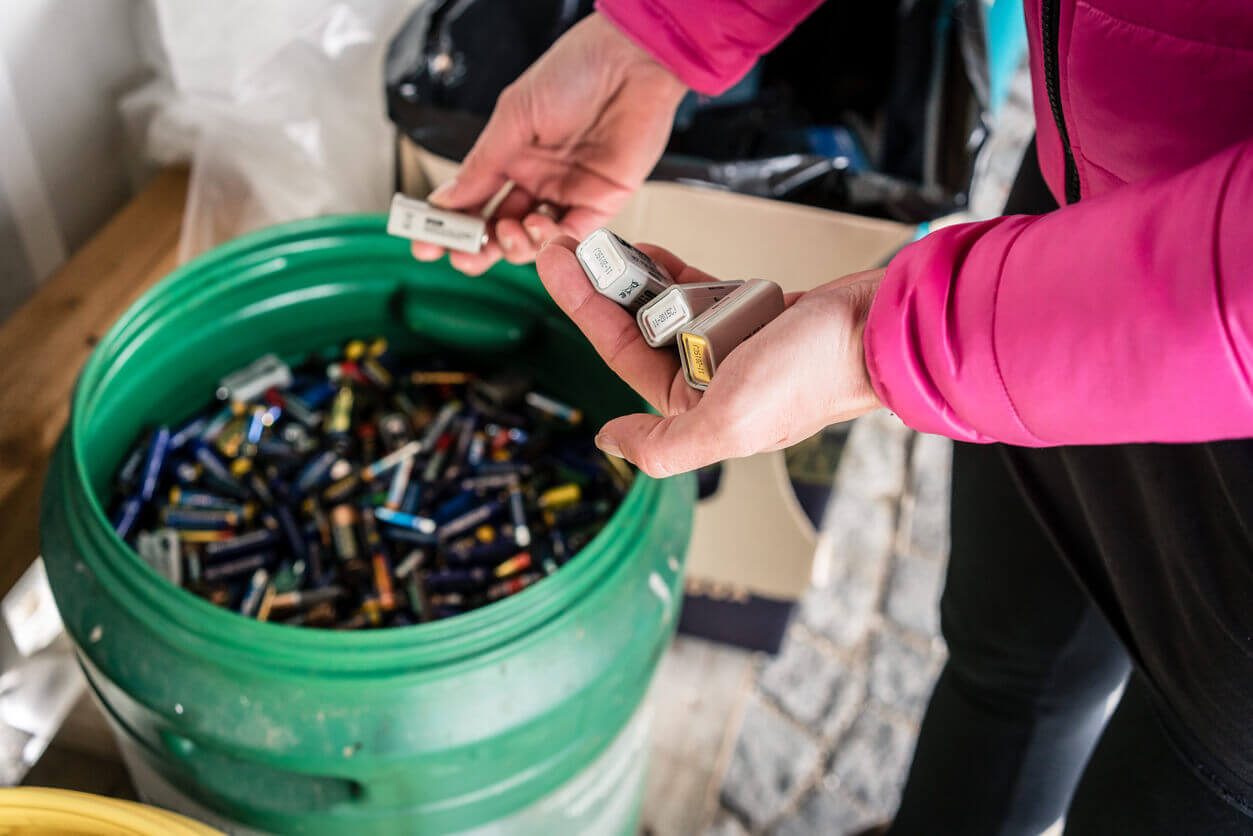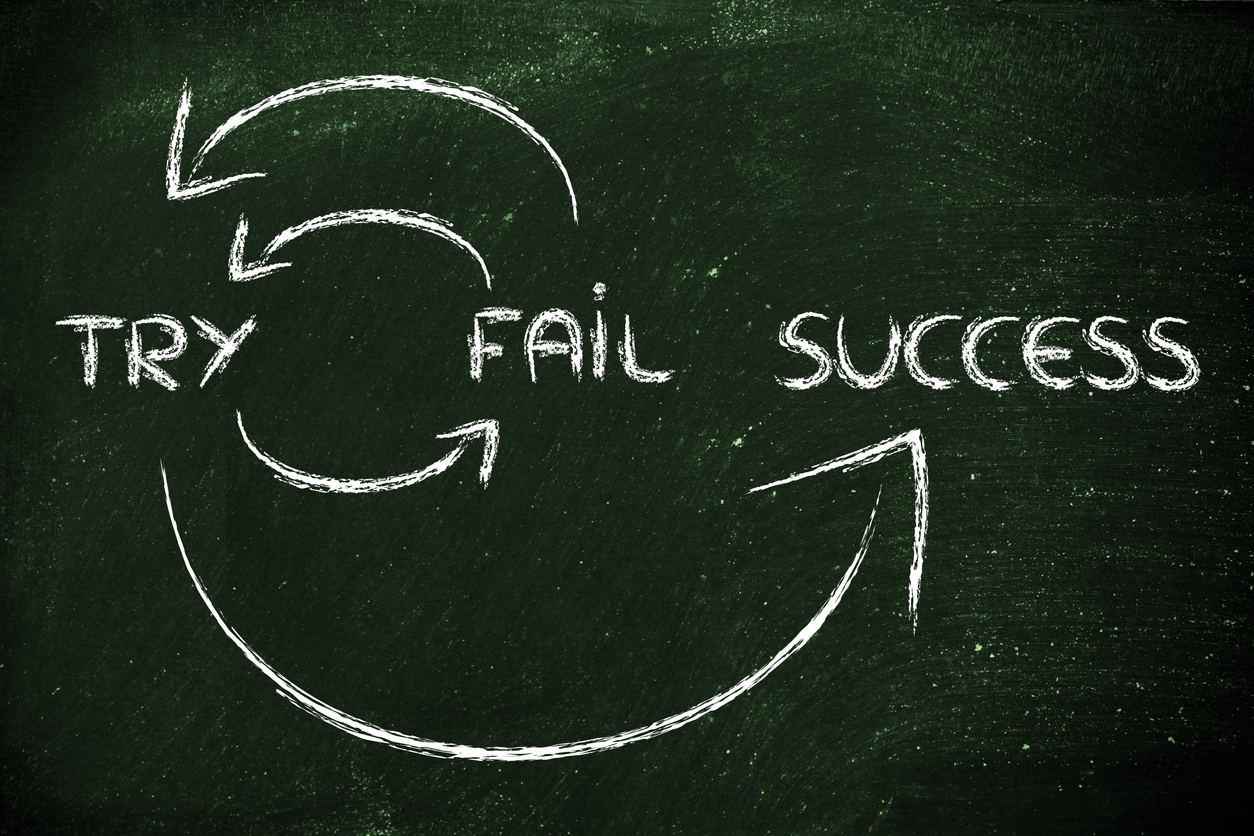Recyclable materials list: can you tell the difference between recyclable and non-recyclable materials?
According to the United Nations (UN), only 9% of all plastic ever produced by humanity has been recycled. In fact, National Geographic notes that by 2050, almost all seabird species on the planet will be consuming plastic. Adding to this the fact that plastic is one of the wastes that takes longest to decompose, the question is self-evident: Are we doing everything we can to recycle? Are you sure that you're recycling as much waste as possible?
Just consider that, every year, over 11.2 billion tonnes of solid waste are collected. However, in many cases, problems arise when we don't know what to recycle and what not, or how to separate each component. That's why, in the article, we provide you with a recyclable materials list.

Which materials are recyclable?
Looking at the figures above, as well as those related to climate change, it seems obvious that as a society, we have yet to properly take on board what needs to be done at the individual level to achieve global solutions, meaning we're not doing everything we can to reduce our waste. Although laziness is a decisive factor here, we cannot overlook the impact of lacking awareness when it comes to recycling at home.
Generally speaking, it may not be clear which materials can be recycled, how to separate these and which bin each one goes into. Do you understand the different bins for recycling? You're sure to have seen or used them often: yellow, green, blue, brown and grey. There is also a special waste bin.
Here's a list of recyclable materials, which also mentions what each material can be used for once processed. Remember: the small step of combining awareness, knowledge and action can result in a major breakthrough in terms of climate change, so let's figure it all out together.

1. Packaging
Packaging is one of the biggest issues wreaking havoc on the environment today, and as National Geographic indicates, globally, almost one million plastic drinks bottles are sold every minute. However, there is a special bin specifically for these: the yellow one.
In order to make it easier to remember everything that goes into this bin, here's a list of waste that falls into this category, divided into several groups: metal, cartons, cork and plastic.
Metal
Metal is one item on the recyclable materials list. This group covers drinks cans and food tins, bottle tops, jar lids, aluminium trays and one of the waste items that causes most doubt: aerosols, such as deodorants, air fresheners and other such products.
Using these recycled materials, walls can and have been built using only compressed cans and tins, and that's just one of the infinite possibilities of metal. Additionally, it's one of the most versatile elements in terms of reusing it directly at home - just apply your imagination!
Cartons
How many cartons do you consume at home over the course of a year? If we consider the most common uses of this type of packaging, what springs to mind is cartons of milk, juice and even soup. Unfortunately, their production process means they are not readily biodegradable although they are highly recyclable, because in most cases, such cartons include a large amount of cardboard, around 25% plastic, and a small amount of aluminium. Thus, they can once again be used for construction, either by separating the individual elements or compressing them and melting them together.
Cork
Included in this group of our recyclable materials list are both the corks from certain bottles and expanded polystyrene, also known as 'white cork', which is commonly used for food packaging. In both cases, the cork is repurposed, as it cannot be re-applied to the food sector. However, by melting and combining it with other materials, items as varied as tennis balls and sports' centre floors can be produced, as well as the soles of shoes and even benches.
Plastic
This is probably the biggest group and the one that most fills yellow bins in any city: plastic bottles, plastic wrap, toothpaste tubes, lids, tubs and even the tops of squeezy food pouches and other items that are produced daily by the tonne.
Estimates of how long this plastic lasts for range from 450 years to forever, but the real cause for concern is that they don't always end up in the correct bin for recycling, despite everything they can be used for. Given that the industry has worked hard to reuse such material due to its low likelihood of decomposition, plastics have been used to manufacture street fixtures and furniture, school supplies such as backpacks and pens, and even for certain car components.

2. Glass
Glass is a classic on the recyclable materials list, as it's one of the most frequently reused materials there is. However, mistakes are still being made when it comes to depositing glass in the correct bin for its subsequent recycling into new containers. Do you know which waste can and cannot be thrown into this bin? The answer lies in knowing which types of glass are allowed and which not.
For example, if we're talking about glasses, cups, mugs and other glassware, these cannot be disposed of in the glass waste bin, and the same goes for light bulbs. You will need to take these items to the nearest household recycling centre to dispose of them properly.
3. Paper and cardboard
The reuse of paper and cardboard is probably the best known form of recycling, mainly because of its new applications in stationery, for books and notebooks. We all know that the blue bin is for this purpose, but what are the most common errors when recycling such waste?
Nappies are often thrown in this bin - but they need to go in the grey one, for the household waste- as are certain containers, such as cartons that are put here in the erroneous belief that they're made solely of cardboard. However, this is not the case and, as we have pointed out above, they should go in the yellow bin. And despite what we might think, serviettes and toilet paper don't go in the blue bin either, instead going out in the brown bin, with organic waste.
4. Batteries
We all acknowledge that batteries aren't everyday waste and that they pose a serious environmental hazard when not disposed of properly.
It's unfortunately common for them to be found in the grey and brown bins, when they instead need to be disposed of in dedicated battery collection bins found in shopping centres and other establishments.
5. Wood
Wood is one item on the recyclable materials list that can most readily be repurposed. In this case, manufacturing chipboard furniture, as well as for energy production through combustion, are the most frequent uses for this material. However, if you prefer to actually dispose of some wood, it's best to take it to your nearest household waste recycling centre.
What about non-recyclable materials?
While we're talking about recyclable materials, it's also important to cover those that cannot be recycled. Falling into this group are toxic materials such as certain types of ink, for example, as used in fax machines or shop receipts, paint, tins of paint, and any clothes that may have paint stains on them. Also in this group are mirrors, ceramics, self-adhesive materials, photos and laminated paper.

The importance of recycling to support sustainable development
The mere act of paying attention to how waste needs to be handled requires a minor exertion that can have a major impact on the planet and each of us individually. In this sense, the future of the planet and the economy depends on sustainable practices. The companies and professionals of the future hold the key to a paradigm shift that will open new career paths in all fields of industry for those with an environmental vision, because when the goal is to evolve towards a better world, all knowledge is welcome.
With this aim to help people progress, overcome the challenges posed by the fourth industrial revolution and grow in an inclusive and sustainable way, Banco Santander is committed to three key concepts to boost employability: lifelong learning, reskilling and upskilling. To support this commitment, it has created the Santander Open Academy website, a unique and pioneering global programme.
If you would like to keep growing personally and professionally, head over to the Santander Open Academy website, where you'll find 100s of opportunities to train together with internationally renowned institutions. Access training in technology, languages, research, investigation, soft skills, internships and female leadership, which will help you to improve your employability or refocus your career.
Do you want to become a lifelong learner and increase your job opportunities? The Santander Open Academy website has plenty of options to help you achieve your goals. Check out the website and remember: you can sign up for as many courses as you like. Make the most of this opportunity!

More posts to read...
-
 12/04/2024 | Santander Universidades
12/04/2024 | Santander UniversidadesGrowth mindset: examples in the workplace to develop the right attitude toward challenges
Card text -
 01/03/2024 | Santander Universidades
01/03/2024 | Santander UniversidadesThe sandwich technique: how to deliver criticism in an assertive way
Card text